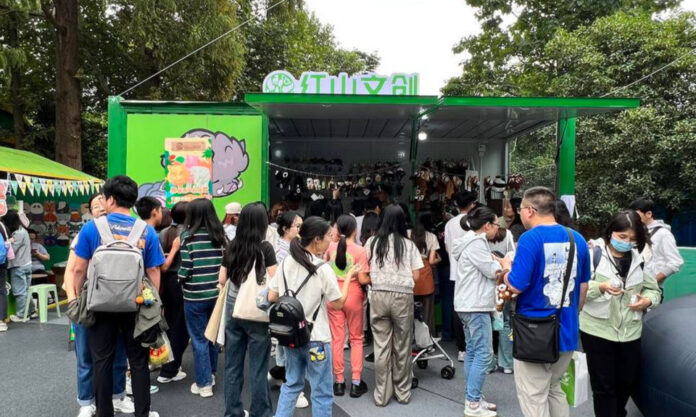When COVID descended upon us, it quickly looked like it was going to be curtains for our local Zoo. All income had been cut off overnight but the expenses of caring for their animals remained. Now, it’s basking in the limelight, and earning plenty to boot.
A cute otter doll, a panda shoulder bag… During the recent Mid-Autumn Festival and National Day super golden week, Nanjing Hongshan Forest Zoo saw growth in its cultural and creative products become even stronger, with sales levels nearly three times those of 2022. The Zoo sold 5,000 red panda bracelets during the holiday alone.
“I like the blind box in the zoo the best! It’s so cute”, said Zoo visitor, Chen Mengyun, a college student who was about to return to her hometown for an internship. “I really like these animal cultural creations with Hongshan characteristics. We can take home our love and emotion for Hongshan Zoo and the city of Nanjing.”
Chen’s feelings hit the nail on the head. As 2020 dawned, Hongshan Zoo suffered a direct economic loss of more than ¥13 million during the 51 days it was closed. As the only self-financing institution among zoos in provincial capital cities across the country, fully 85 percent of the zoo’s income was from ticket sales.
The closure forced the Zoo to look at other ways of earning money. First they offered up their animals for adoption by the members of the public. Those adopters could learn all about the new member of their family and subsequently, be guided by the Zoo’s staff to enter their animal’s enclosure to see the daily routine of their lives.
Their measure had been a success, in so far as it alone likely saved the Zoo from closure. It also propelled the Zoo in to the national consciousness, as a general rising in awareness for animal protection took hold. In short, China’s people were incredibly sympathetic.
Then there was to come the Zoo’s cultural and creative products, which it began testing in 2020. Initially there were only animal-shaped fridge magnets, which brought in about ¥10,000 per month. That wasn’t going to be enough.
Teaming up with some brands to release co-branded products, sales increased to more than ¥1 million in 2021. With its new-found, solid fan base also attracting a large number of animal lovers and environmental enthusiasts from all over the country, sales in 2022 exceeded ¥2 million.
This year, fully ¥5 million was generated in 23H1 alone, as the Yangtze Evening News reported on 13 October. Nanjing Hongshan Forest Zoo had found the secret recipe for the emotional connection between its cultural and creative products, and tourists.
So what’s making all this money? The postcards, fisherman hats, canvas bags and yes, fridge magnets, plus many more cultural and creative products based on images of the Zoo’s furry friends, are complimented by limited editions every month.
Recents stars have been a small-clawed otter and weasel, which have joined the products being sold in the Zoo’s cultural and creative cabins, carts, self-service vending machines and online malls.
But, as Shen Zhijun, Director of Nanjing Hongshan Forest Zoo, noted, their original intention in developing such products was not to make profits, but to tell the story of the Zoo and convey its care for animals and respect for life.
All income from Hongshan’s cultural and creative products is invested in improving the living environment of the animals therein and maintaining the infrastructure of the Zoo.









